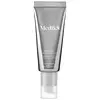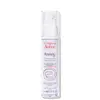What's inside
What's inside
 Key Ingredients
Key Ingredients

 Benefits
Benefits

 Concerns
Concerns

 Ingredients Side-by-side
Ingredients Side-by-side

Water
Skin ConditioningCaprylic/Capric Triglyceride
MaskingGlycerin
HumectantIsododecane
EmollientCyclodextrin
AbsorbentCetearyl Olivate
Sodium Acrylate/Sodium Acryloyldimethyl Taurate Copolymer
Emulsion StabilisingCetearyl Alcohol
EmollientSorbitan Olivate
EmulsifyingTocopheryl Acetate
AntioxidantSqualane
EmollientHydroxyethyl Acrylate/Sodium Acryloyldimethyl Taurate Copolymer
Emulsion StabilisingHydroxyacetophenone
AntioxidantRubus Chamaemorus Seed Oil
Skin Conditioning3-O-Ethyl Ascorbic Acid
Skin ConditioningPhenoxyethanol
PreservativeHydroxypropyl Methylcellulose
Emulsion StabilisingPentylene Glycol
Skin ConditioningDaucus Carota Sativa Seed Oil
EmollientRetinal
Skin ConditioningSodium Hyaluronate
HumectantTetrahexyldecyl Ascorbate
AntioxidantAlumina
AbrasiveIsostearic Acid
CleansingLecithin
EmollientPolyglyceryl-3 Polyricinoleate
EmulsifyingLonicera Japonica Flower Extract
Skin ConditioningLonicera Caprifolium Flower Extract
PerfumingPolyhydroxystearic Acid
EmulsifyingDisodium EDTA
Stearic Acid
CleansingEthylhexylglycerin
Skin ConditioningPolysorbate 60
EmulsifyingSorbitan Isostearate
EmulsifyingBHT
AntioxidantVanilla Planifolia Fruit Extract
Skin ConditioningSodium Polyaspartate
HumectantDipteryx Odorata Bean Extract
MaskingCoumarin
PerfumingCI 14700
Cosmetic ColorantCI 77891
Cosmetic ColorantWater, Caprylic/Capric Triglyceride, Glycerin, Isododecane, Cyclodextrin, Cetearyl Olivate, Sodium Acrylate/Sodium Acryloyldimethyl Taurate Copolymer, Cetearyl Alcohol, Sorbitan Olivate, Tocopheryl Acetate, Squalane, Hydroxyethyl Acrylate/Sodium Acryloyldimethyl Taurate Copolymer, Hydroxyacetophenone, Rubus Chamaemorus Seed Oil, 3-O-Ethyl Ascorbic Acid, Phenoxyethanol, Hydroxypropyl Methylcellulose, Pentylene Glycol, Daucus Carota Sativa Seed Oil, Retinal, Sodium Hyaluronate, Tetrahexyldecyl Ascorbate, Alumina, Isostearic Acid, Lecithin, Polyglyceryl-3 Polyricinoleate, Lonicera Japonica Flower Extract, Lonicera Caprifolium Flower Extract, Polyhydroxystearic Acid, Disodium EDTA, Stearic Acid, Ethylhexylglycerin, Polysorbate 60, Sorbitan Isostearate, BHT, Vanilla Planifolia Fruit Extract, Sodium Polyaspartate, Dipteryx Odorata Bean Extract, Coumarin, CI 14700, CI 77891
Water
Skin ConditioningTriethylhexanoin
MaskingCyclopentasiloxane
EmollientCetearyl Alcohol
EmollientCyclohexasiloxane
EmollientCeteareth-20
CleansingPolymethyl Methacrylate
Ceteareth-33
CleansingCaprylic/Capric Triglyceride
MaskingAmmonium Acryloyldimethyltaurate/Vp Copolymer
Oenothera Biennis Oil
EmollientPhenoxyethanol
PreservativeBenzoic Acid
MaskingDisodium EDTA
Retinal
Skin ConditioningTocopheryl Glucoside
EmollientOleoyl Dipeptide-15
Skin ConditioningMica
Cosmetic ColorantSodium Hydroxide
BufferingSilica
AbrasiveBHT
AntioxidantOleoyl Tetrapeptide-31
AntioxidantTocopherol
AntioxidantTitanium Dioxide
Cosmetic ColorantCaramel
Cosmetic ColorantCI 17200
Cosmetic ColorantWater, Triethylhexanoin, Cyclopentasiloxane, Cetearyl Alcohol, Cyclohexasiloxane, Ceteareth-20, Polymethyl Methacrylate, Ceteareth-33, Caprylic/Capric Triglyceride, Ammonium Acryloyldimethyltaurate/Vp Copolymer, Oenothera Biennis Oil, Phenoxyethanol, Benzoic Acid, Disodium EDTA, Retinal, Tocopheryl Glucoside, Oleoyl Dipeptide-15, Mica, Sodium Hydroxide, Silica, BHT, Oleoyl Tetrapeptide-31, Tocopherol, Titanium Dioxide, Caramel, CI 17200
 Reviews
Reviews

Alternatives
Ingredients Explained
These ingredients are found in both products.
Ingredients higher up in an ingredient list are typically present in a larger amount.
BHT is a synthetic antioxidant and preservative.
As an antioxidant, it helps your body fight off free-radicals. Free-radicals are molecules that may damage your skin cells.
As a preservative, it is used to stabilize products and prevent them from degrading. Specifically, BHT prevents degradation from oxidation.
The concerns related to BHT come from oral studies; this ingredient is currently allowed for use by both the FDA and EU.
However, it was recently restricted for use in the UK as of April 2024.
Learn more about BHTThis ingredient is an emollient, solvent, and texture enhancer. It is considered a skin-softener by helping the skin prevent moisture loss.
It helps thicken a product's formula and makes it easier to spread by dissolving clumping compounds.
Caprylic Triglyceride is made by combining glycerin with coconut oil, forming a clear liquid.
While there is an assumption Caprylic Triglyceride can clog pores due to it being derived from coconut oil, there is no research supporting this.
Learn more about Caprylic/Capric TriglycerideCetearyl alcohol is a mixture of two fatty alcohols: cetyl alcohol and stearyl alcohol. It is mainly used as an emulsifier. Emulsifiers help prevent the separation of oils and products. Due to its composition, it can also be used to thicken a product or help create foam.
Cetearyl alcohol is an emollient. Emollients help soothe and hydrate the skin by trapping moisture.
Studies show Cetearyl alcohol is non-toxic and non-irritating. The FDA allows products labeled "alcohol-free" to have fatty alcohols.
This ingredient is usually derived from plant oils such as palm, vegetable, or coconut oils. There is debate on whether this ingredient will cause acne.
Due to the fatty acid base, this ingredient may not be Malassezia folliculitis safe.
Learn more about Cetearyl AlcoholDisodium EDTA plays a role in making products more stable by aiding other preservatives.
It is a chelating agent, meaning it neutralizes metal ions that may be found in a product.
Disodium EDTA is a salt of edetic acid and is found to be safe in cosmetic ingredients.
Learn more about Disodium EDTAPhenoxyethanol is a preservative that has germicide, antimicrobial, and aromatic properties. Studies show that phenoxyethanol can prevent microbial growth. By itself, it has a scent that is similar to that of a rose.
It's often used in formulations along with Caprylyl Glycol to preserve the shelf life of products.
Retinal is a form of retinoid. Retinoids are the gold-standard class of anti-aging ingredients.
Retinal has many benefits as other retinoids: improve skin texture, reduce large pores, reduce the effects of aging, reduce the visibility of dark spots, heal scars, and fight acne.
Studies show retinal may work at a faster rate than retinol due to its structure.
All retinoids have to be converted into retinoic acid before starting to work. Some retinoids take several steps of conversion before binding. Retinal is only one step away, making it more potent.
Like other retinoids, retinal may be irritating. It is best to ease into using this ingredient frequently.
Using the 'ramp up' method, start by using retinol once a week. This gives your skin time to adjust and decrease irritation. Once you feel ready, you can slowly increase the frequency of retinol use.
Using retinoids will increase sun-sensitivity in the first few weeks of use. Though studies show retinoids increase your skin's natural SPF with continuous use, it is best to always wear sunscreen and sun-protection.
Learn more about RetinalWater. It's the most common cosmetic ingredient of all. You'll usually see it at the top of ingredient lists, meaning that it makes up the largest part of the product.
So why is it so popular? Water most often acts as a solvent - this means that it helps dissolve other ingredients into the formulation.
You'll also recognize water as that liquid we all need to stay alive. If you see this, drink a glass of water. Stay hydrated!
Learn more about Water